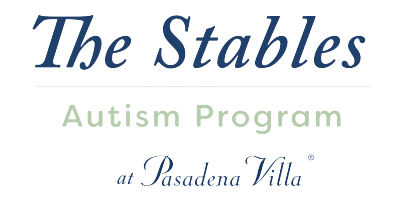Dialectical Behavioral Therapy (DBT)
Home » Our Program » Treatment Methods » Dialectical Behavioral Therapy (DBT)
What is Dialectical Behavioral Therapy (DBT)?
Marsha Linehan created Dialectical Behavior Therapy (DBT) in the 1980s to treat borderline personality disorder. Over time, research has found it effective in treating many other mental health disorders, including autism spectrum disorder.
DBT is a form of cognitive-behavioral therapy that emphasizes balance, acceptance, and change. Research shows that it helps reduce suicidal behavior, depression, and anxiety, proving it to be an evidence-based method.
How DBT Benefits Individuals with Autism Spectrum Disorder (ASD)
Dialectical Behavioral Therapy (DBT) for ASD motivates progress in treatment, and the client largely drives it. DBT emphasizes skill building and empowerment, focusing on acceptance and emotional regulation practices. These skills allow clients to develop care plans to use as interventions when their emotions are overwhelming.
DBT also helps clients address social navigation, reducing the vulnerability clients struggle with in social settings. The breakdown on boundary setting is especially helpful, as is the concept of a wise mind. Helping our clients improve their emotional regulation and social skills helps to protect them from self-harm and suicidality. DBT helps clients accept themselves, be mindful, and embrace their imperfections to develop a genuine and unified sense of self.
Further, it’s important to note that DBT employs a person-centered approach, making it adaptable to an individual’s unique needs. DBT helps those with ASD learn ways to handle challenges and improve their lives in a structured, personalized, and supportive setting.
4 Components of Dialectical Behavioral Therapy (DBT) for Autism Treatment
DBT for ASD uses four key components to help clients establish lasting skills, including:
Mindfulness
This is the act of noticing and being present and in the moment. This practice encourages us to gain an understanding of our emotions and personhood through the purposeful act of awareness without judgment. Through this practice, clients learn to identify how their bodies express their needs.
Regulating Emotions and Distress Tolerance
This is the practice of recognizing and managing emotions as they come up. We view emotions as important parts of our humanity and our survival. By learning to recognize them, clients can intervene on overwhelming emotions earlier.
This practice can help prevent overwhelm and provides tools to avoid self-harm when an individual does become over-stressed. Finding productive outlets for clients’ toughest emotions is key to their well-being.
Interpersonal Effectiveness
DBT teaches clients about boundaries and how to gauge the intensity of a situation.
For example, if a person asks a favor of me, and I don’t want to do it, I can say no. This is a low-intensity situation, though it may feel differently. However, when a person ignores my no, they have increased the intensity, so the degree to which I assert my no should increase. Setting and respecting good boundaries is essential to healthy relationship building.
Crisis Intervention
Part of DBT involves establishing care plans for when emotions become overwhelming. Group and individual therapy environments are geared towards learning and practicing these skills. We offer help during difficult times so clients don’t have to face challenging situations alone.
Using DBT in Treatment for Autism Spectrum Disorder (ASD)
Integrating DBT into the treatment of autism spectrum disorder requires a tailored approach. Here are some key considerations:
- Individualized Treatment Plans: Treatment plans should be customized to meet the unique needs and abilities of each individual with ASD. A thorough assessment by a trained therapist is essential to identify specific areas that require attention.
- Collaborative Care: Effective treatment often involves a multidisciplinary team, including psychologists, speech therapists, occupational therapists, and educators. Collaboration ensures a holistic approach to addressing the challenges associated with ASD.
- Family Involvement: Involving family members in the treatment process can be highly beneficial. In family therapy sessions, they can learn DBT techniques to support their loved ones with ASD and create a more supportive environment.
- Ongoing Support: DBT is not a quick fix but rather a long-term approach to managing symptoms and improving well-being. Regular therapy sessions and ongoing support are essential for sustained progress.
- Patience and Flexibility: Individuals with ASD may progress at their own pace, and setbacks may occur. It’s crucial for both therapists and family members to exercise patience and adapt the treatment plan as needed.
At The Stables Autism Program, we use this therapy to help our clients improve their well-being and overall quality of life. DBT helps those with autism manage emotions, communicate better, and deal with daily challenges. We create personalized treatment plans for each individual for the best outcomes. Contact us today to learn more about our program.


 Call
Call